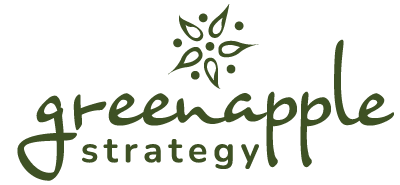If you lead marketing for a small or mid-size business, you know how easy it is to jump straight into tactics when planning for a new year. But without a disciplined approach, you risk creating a marketing plan that looks busy on paper but doesn’t actually move the needle.
If you want to build a great marketing plan, you have to look back before you can look forward. You need to learn from past successes and failures and assess the changing market landscape. This approach will help you align your marketing strategies with your overall business objectives.
Build Your Marketing Plan With Five Simple Questions
We use five core questions to guide marketing conversations with our clients. These aren’t theoretical questions. Each one has helped our clients uncover opportunities, solve challenges, and build stronger marketing strategies. As you start planning for 2026, you can use them as a checklist to guide your own process.
1. What lessons were learned from this year’s marketing efforts?
Every marketing team has wins and misses. The key is taking time to dig into both. What campaigns drove the most engagement? What channels fell flat? Which experiments are worth repeating? Looking at your successes and failures side by side gives you clarity on what to carry forward and what to leave behind.
Client Example: As a long-time marketing partner of The Gardner School during their nationwide expansion, we hosted annual collaborative brainstorms to review wins and challenges. These sessions help us identify what worked and build on that momentum in the next year’s plan.
2. What are the overall business goals and objectives for the upcoming year?
Marketing goals only matter if they’re connected to company-wide objectives. If leadership is prioritizing growth in one division, entering a new market, or even focusing on employee retention, your marketing should be designed to support those goals. This is where collaboration with stakeholders across the business is crucial.
Client Example: When working with First Acceptance Auto Insurance, we learned that one of their key objectives was boosting employee engagement and recruitment. That insight helped us create an innovative internal engagement campaign that strengthened company culture while supporting long-term growth.
3. What are the main challenges and opportunities in the market?
Markets shift quickly. New technologies emerge, competitors pivot, and customer expectations evolve. Before you set your 2026 plan, take stock of what’s changing in your industry. Understanding both the threats and opportunities in your space helps you position your marketing efforts more strategically.
Client Example: During Urban Sweat’s merger and acquisition process, this question helped us identify the unique challenges of onboarding new franchisee owners. By addressing those needs with targeted marketing support materials, we created a smoother transition and stronger growth trajectory.
4. How can you improve and ensure alignment between marketing and other departments?
Even the smartest marketing plan will stall if it’s out of sync with sales, operations, or customer service. Use the planning season to check in. Are your sales teams equipped with updated materials? Do operations have the capacity to deliver on what you’re promoting? Is everyone clear on your target audience, messaging, and priorities? Alignment drives efficiency and impact.
Client Example: With Maxwell Roofing, this question led to a complete overhaul of their sales playbook. The new playbook streamlined proposal processes and ensured consistent messaging across teams.
5. How will you evaluate your efforts and pivot if needed?
No plan survives the year untouched. That’s why building in evaluation points—and knowing how you’ll pivot if needed—is essential. Set milestones to review results quarterly. If a campaign underperforms, plan in advance what you’ll try instead. If a new opportunity arises, decide how you’ll shift resources. Planning for flexibility gives you confidence to adapt without scrambling.
Client Example: During the pandemic, ATECH needed a new path forward. By asking this question, we quickly shifted from a brand awareness campaign to helping them launch a new service model, a switch that kept them resilient in a time of uncertainty.
Let Green Apple Strategy Help You Plan
The best marketing plans are built on a foundation of honest evaluation and strategic foresight. If you need help getting started on next year’s marketing plan, our team is here.
We can help you build an effective strategy to help your brand achieve its business goals. Get a behind-the-scenes look at our process or connect with our team to start a conversation.











